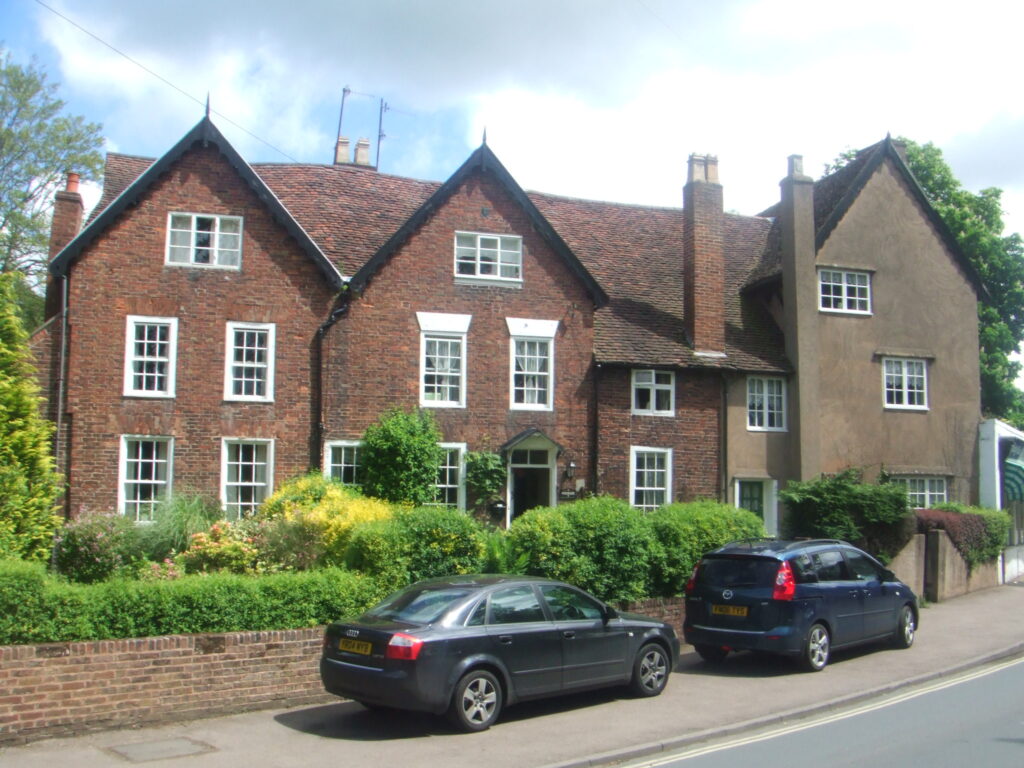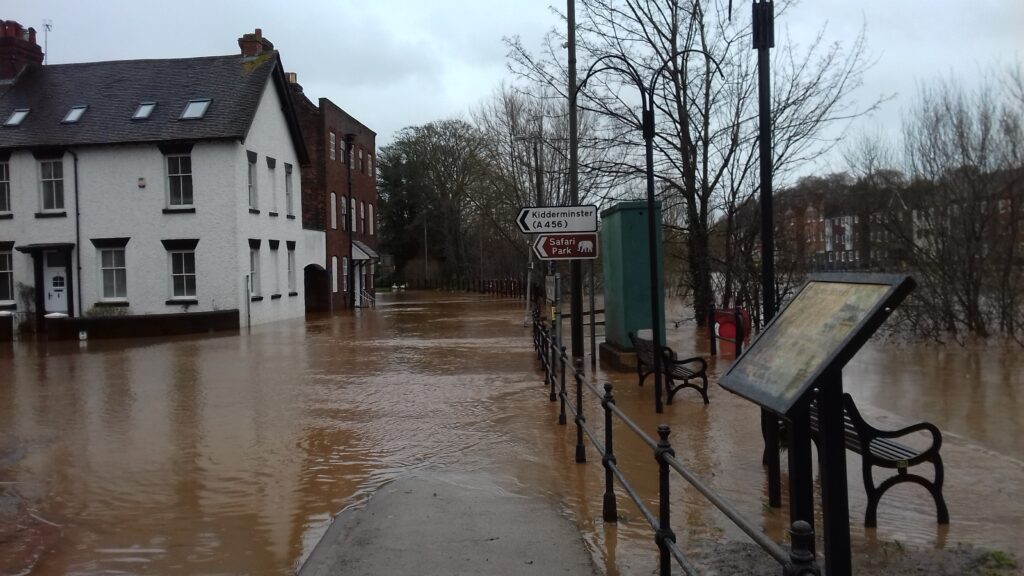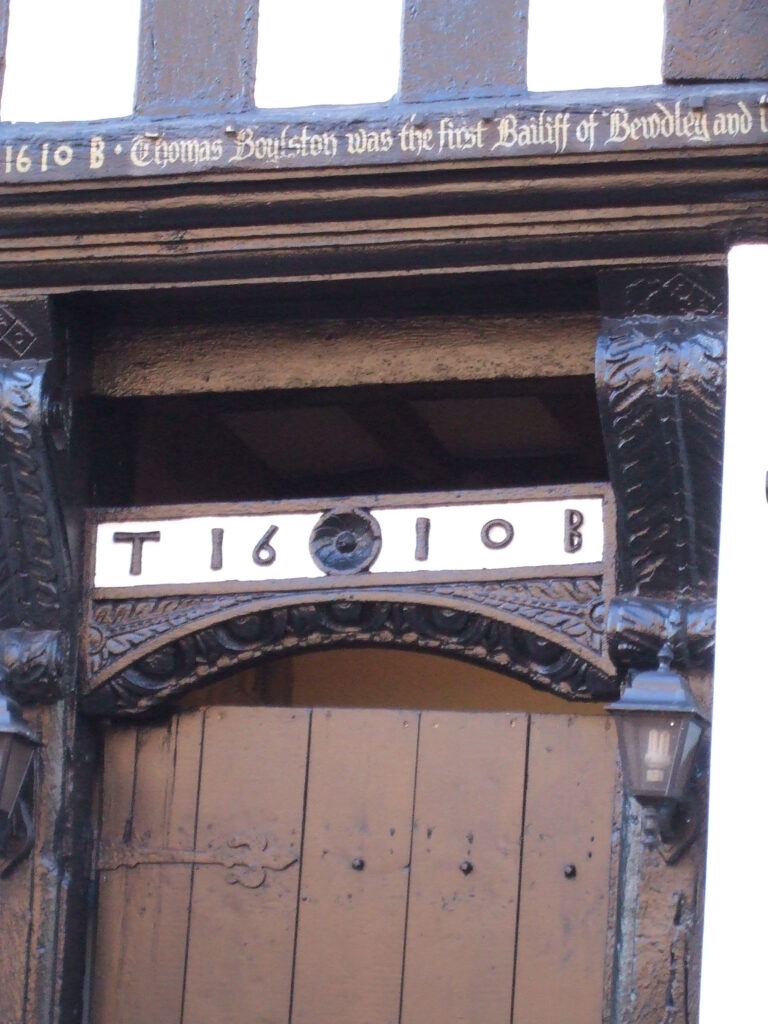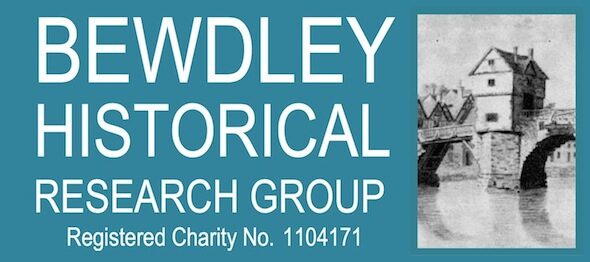A Potted History Of Bewdley
(Compiled and written by ‘Bewdley Historical Research Group’)
The early name for Bewdley was Wribbenhall, which is mentioned in the Domesday Book of 1086. Wribbenhall (Gurbehale) was an out-lying estate of the manor of Kidderminster and at that time, it extended across both sides of the River Severn. By about 1100, all parts of the manor lying on the west bank of the river had been granted to Ralph Mortimer; in c.1160 Henry II gave the east bank parts to his steward, Manser (Manasser or Mansel) Biset.
The Mortimers had territory extending deep into Wales as well as manors on the Severn. Their manor at Bewdley is first mentioned by that name (thought to stem from ‘Beaulieu’ in French and meaning ‘beautiful place) in the late 13th century. It certainly had a ferry by 1336 (probably earlier), and was an official market town by 1376; Bewdley rapidly developed as a crutial inland port too.
A boost to the town came in 1448 when a bridge was built over the river. This was in the turbulent period known as ‘The Wars of the Roses’. Bewdley was still a Mortimer manor and in the hands of Richard, Duke of York (whose mother was a Mortimer). After York’s flight from Ludlow to Ireland in 1459, it is possible Bewdley suffered at the hands of Lancastrian soldiers, as the bridge was reported as being severely damaged and it is known that a spate of new house building occurred in the early 1460s.
Bewdley became a royal manor when the Duke of York’s son became Edward IV. In 1472, after, it is said, the inhabitants of Bewdley had done the new king great service at the Battle of Tewkesbury, Edward IV granted the town a borough charter. In 1484, Edward’s brother, Richard III, contributed financially to a new bridge.
Bewdley continued to be a royal manor under the Tudors. The Council of the Marches met there for six months of the year under Prince Arthur, who resided during those times at his palace of Tickenhill, on a hill just to the west of and overlooking Bewdley town centre. Tickenhill palace is where Arthur had been married by proxy to Catherine of Aragon in 1499. After his death in 1502 his body lay at Bewdley for one night on its journey from Ludlow to Worcester where he was buried.
Wribbenhall continued to be part of the manor of Kidderminster and little is known of its early history. It does, however, have the oldest house at Nos. 5, 7 and 9 Stourport Road which was built in 1310. At the rear of this property, a chapel funded by local residents was built in 1720. Known as Christ Church, it was a chapel of ease to St. Mary’s in Kidderminster and it had its own small burial ground. In 1866, a new cemetery, located ¼ of a mile away on the Kidderminster Road, was consecrated and the present All Saints’ Church was later built there in 1879. Christ Church was demolished c.1880 and its site is now a public memorial garden.
Until 1853 Bewdley’s parish church was located a mile south of the town in the hamlet of Ribbesford. This area had been “sub-let” by the Mortimers and became a separate manor but its church, St. Leonard’s, part of which is thought to date from c.1140, remained the mother church for both Ribbesford and Bewdley manors. By the mid 15th century, Bewdley had its own chapel (where St. Anne’s now stands) yet all baptisms, marriages and funerals were recorded in Ribbesford’s registers. Before cremation became common, most Bewdley residents were buried at Ribbesford although some chose to be buried at Dowles, a separate parish which lies a mile north of Bewdley and was formerly in the county of Shropshire. St. Anne’s Church, in the centre of Bewdley, was built in 1745, more than a century before it became the town’s official parish church.
Bewdley’s 1472 borough charter was only the first of several, others being granted by Henry VII, Henry VIII, James I, James II and Queen Anne. From 1605, the borough burgesses had the right to elect their own Member of Parliament. Bewdley has two maces from the time of Queen Anne; it is rare to have two, but not unique. Tickenhill ceased to be Crown property when it was sold in 1873 to Joseph Tangye, an innovative mechanical engineer from Cornwall. In 1870 local solicitor William Nichols Marcy bought the title of ‘Lord of the Manor’ and named his own residence in High Street “The Manor House”- the name it still bears.
Wyre Forest lies to the north west of Bewdley and has been a significant factor in its growth. The Forest was a medieval hunting ground for the Mortimers but also yielded timber for building and burning (especially charcoal production), the bark being used in the tanning industry. The underlying coal measures were exploited by bell pits, evidence for which can still be found.
The Severn was once the second busiest river in Europe (the Meuse being the busiest) and Bewdley was strategic in the system of communication. It was the point at which the river became difficult to navigate upstream and its bridge was the only one between Worcester and Bridgnorth. Boats came upriver to disgorge their goods at Bewdley, where packhorses carried wares west into Wales and east to Birmingham and the Black Country. Boats went downriver with not only local goods, such as forest produce, leather, horn and caps, but also goods from much further afield, even pottery brought from Stoke-on-Trent. At one time, the quaysides of both Bewdley and Wribbenhall were dominated by warehouses and many “grocers” (wholesale merchants) and wharfingers (wharf or warehouse owners who were often also river-carriers) lived in the town.
Bewdley’s role as an inland port, upriver from Bristol, meant it inevitably became linked to that city’s connection with the Atlantic triangular slave trade. The importation via Bristol of goods such as sugar, tobacco, spices etc. produced by slave labour in the West Indies, brought wealth to Bewdley. More happily, the town can claim links with the Quaker abolitionists Joseph Sturge (1793-1859) and his sister Sophia Sturge (1795-1845) who lived in the Bewdley district for several years.
Over several centuries the town flourished and even the English Civil War of the 17th century had little impact on its prosperity. Samuel Skey’s chemical works and brick kiln at nearby Dowles brought him a fortune that enabled him to create the Spring Grove Estate near Kidderminster (now the West Midland Safari Park). There was no serious decline until the early 19th century after the Staffordshire and Worcestershire Canal had joined the Severn three miles downstream in 1771, thereby creating the town of Stourport and linking that place with the industrial heartland of the Midlands. Bewdley had been bypassed—not by its own choice but by the landscape; the surrounding hills having prevented the canal from being brought there instead. Bewdley’s warehouse and river-carrying trade dwindled but some industry continued, notably brass founding, pewtering and comb-making.
The Severn Valley Railway was built in the late 1850s with a station for Bewdley on the Wribbenhall side. It opened in 1862 and a branch-line to Tenbury opened in 1864. However, this new-fangled transport was too late to save the town from its downward slide and it would be a hundred years before the area found a new lease of life as a centre for tourism.
Bewdley and Wribbenhall were municipally re-united in the 1930s though they are still separate parishes. They are linked by a fine Telford bridge of 1798, which replaced the one from the 15th century. The 20th century brought more fame for Bewdley as the birthplace of three-time Prime Minister, Stanley Baldwin. The 21st century has seen the town’s precious historic buildings being preserved from flooding by the Severn with the completion of a flood defence system, which is called into use when the river threatens to overflow the quay. Along the riverside are information boards giving visitors a glimpse into the town’s fascinating past.






